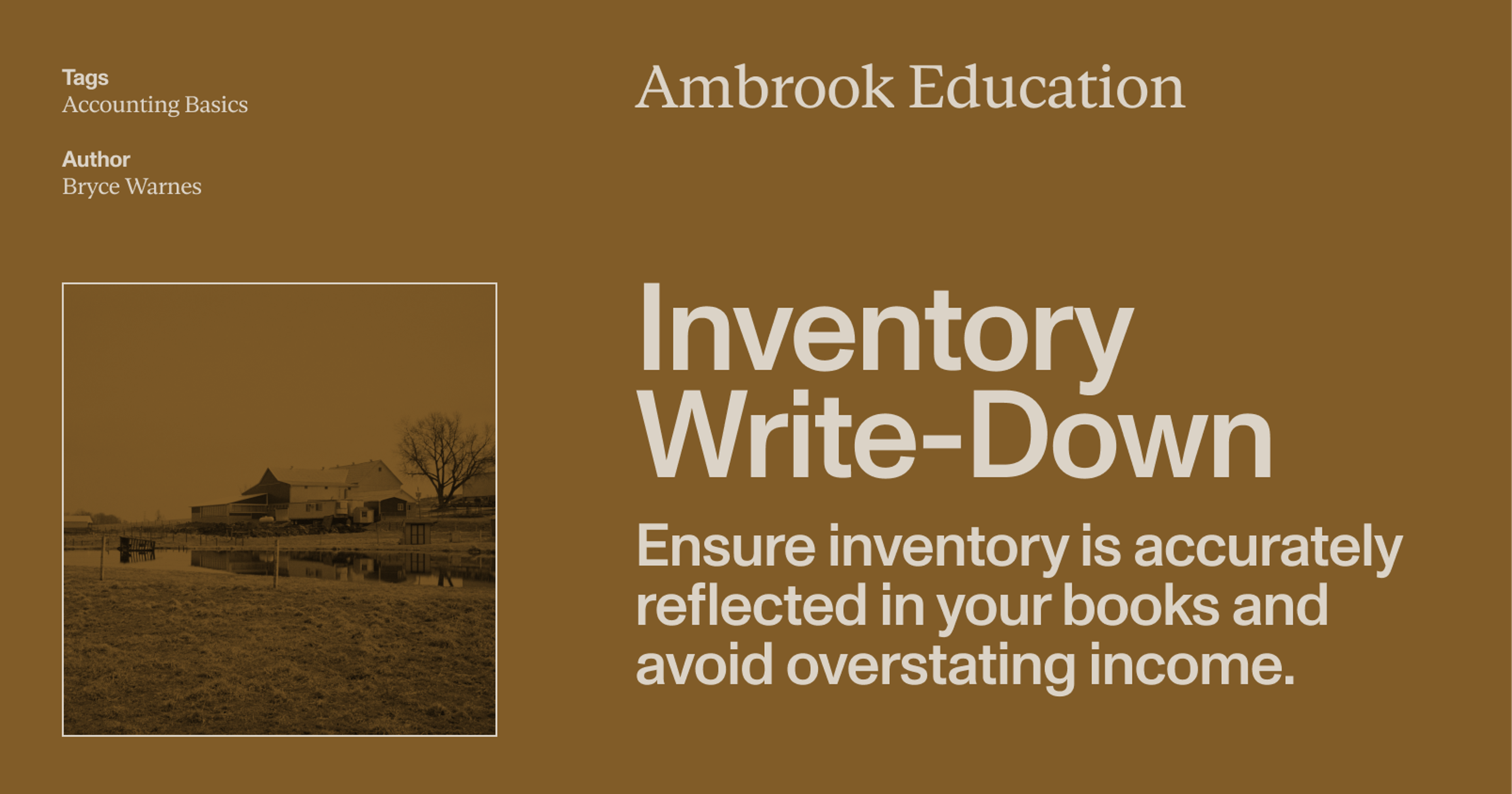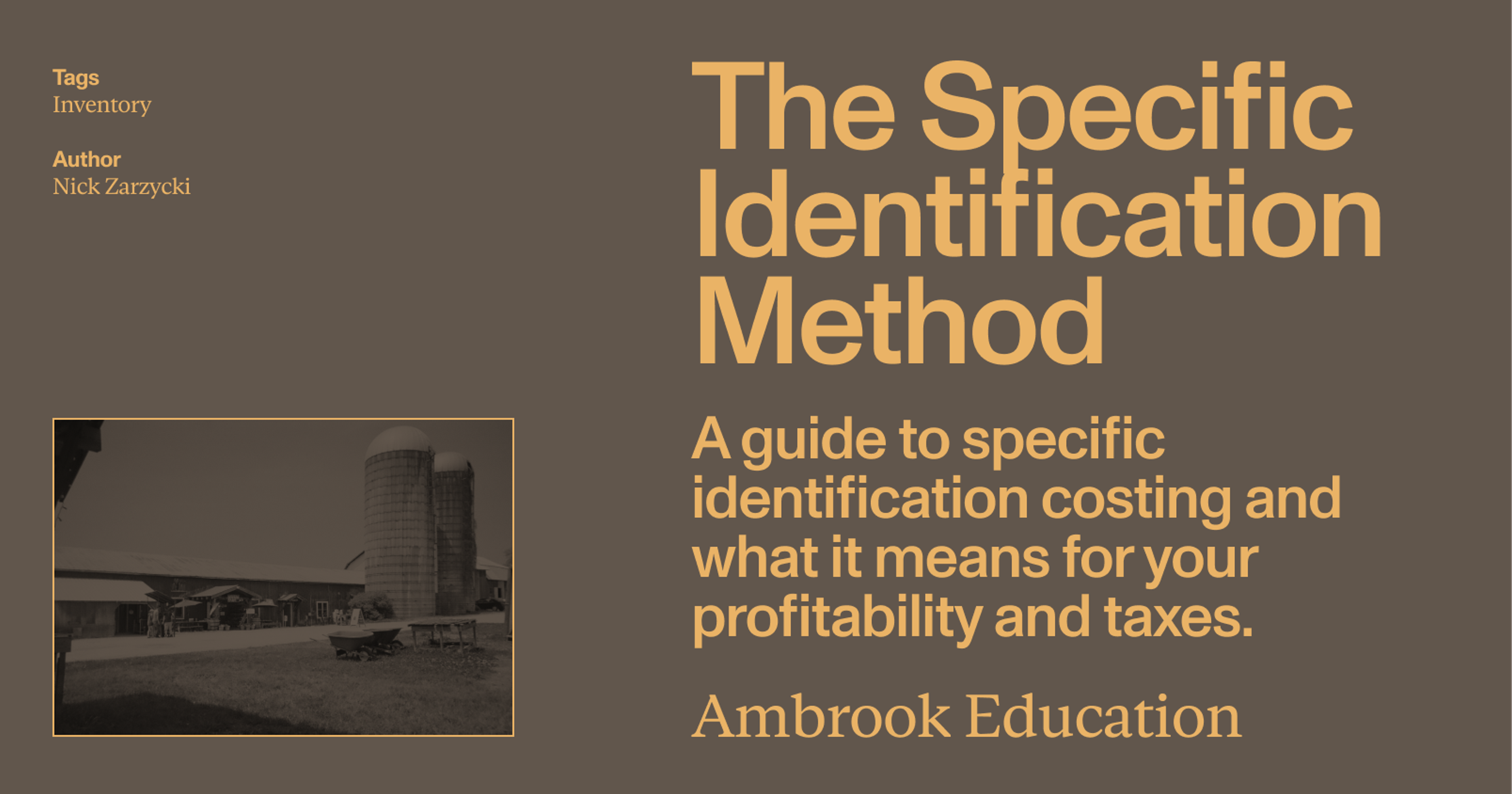If you deal with perishable goods, you might already use FIFO in your day-to-day work. Here’s what it means for your inventory accounting, your profitability and your tax bill.
When working with perishable commodities like fresh produce or feed, it’s natural to assume that older products should be used or sold first before newer ones to maximize their freshness and minimize spoilage.
But that simple assumption can affect far more than just product quality and freshness: it can also influence your business’ balance sheet value, how you measure profitability and even your tax bill. Welcome to the world of ‘first-in, first-out’ (FIFO).
What is first-in, first-out (FIFO)?
Most people are familiar with FIFO as an inventory management practice designed to promote the sale of old or pre-existing products before the sale of new ones, which is also sometimes referred to as ‘stock rotation.’
But FIFO also has a second, less intuitive meaning: it’s also an assumption that business owners make about their operation for accounting purposes. In accounting speak, we refer to this as a ‘costing method.’
Businesses have to choose a costing method when goods that are difficult to separate and track individually (like feed, fuel, fertilizer and crops) are purchased or produced at different prices throughout the year.
Under the FIFO costing method, you assume goods that are purchased or produced first are also used or sold first, making it easier to calculate cost of goods sold (COGS) and ending inventory values.
How does FIFO work?
Let’s say a dairy farmer purchases the corn silage they need to get through feeding season in several batches, and that each batch is purchased at a different price:
| Date | Quantity (tons) | Cost per ton | Total cost |
|---|---|---|---|
| Sept 25 | 100 tons | $40.00 | $4,000 |
| Oct 20 | 100 tons | $45.00 | $4,500 |
| Nov 25 | 100 tons | $50.00 | $5,000 |
Let’s also assume that during the feeding season, the operation uses 250 tons of corn silage.
Under the FIFO (first-in, first-out) costing method, the producer assumes the following:
The first 100 tons come from the September 25 batch at $40/ton
The next 100 tons come from the October 20 batch at $45/ton
The next 50 tons come from the November 25 batch at $50/ton
To calculate total feed costs under FIFO, the producer would make the following calculation:
Total feed costs = (100 x $40) + (100 x $45) + (50 x $50)
Total feed costs = $4,000 + $4,500 + $2,500
Total feed costs = $11,000
To calculate ending inventory, the producer would then take a count of the remaining corn silage (50 tons) and assume it came from the November 25th batch:
Ending inventory value = 50 tons x $50/ton
Ending inventory value = $2,500
As you can see, FIFO matches older, lower-cost inputs with current usage and leaves newer, higher-cost inputs in inventory. That means that when prices are rising, the FIFO costing method results in lower production costs and higher ending inventory values, leading to higher reported profit.
FIFO vs. last-in, first-out (LIFO)
FIFO isn’t the only costing method your business can use. There’s also last-in, first-out (LIFO), which assumes that the most recently purchased inputs are used first.
While LIFO is generally less intuitive and less practical for commodities that have a natural shelf life or storage limitation, it does provide one advantage to agricultural producers: a potentially lower tax bill in the short term.
This is because when input prices are increasing, LIFO treats the newest (and usually most expensive) items as being used or sold first.
In the corn silage scenario we reviewed above, for example, LIFO would assume that the corn silage from the most recent and most expensive batches is consumed first, leading to a higher total feed costs figure:
Total feed costs = (100 x $50) + (100 × $45) + (50 × $40)
Total feed costs = $5,000 + $4,500 + $2,000
Total feed costs = $11,500
LIFO also assumes that the older, lower-cost inventory is left over, resulting in a lower ending inventory value:
Ending inventory value = 50 tons x $40/ton
Ending inventory value = $2,000
This results in higher reported production costs, lower reported profit and lower taxable income.
Read more: Last-In, First-Out (LIFO): Definitions, Examples and Best Practices
FIFO vs. Weighted Average Cost (WAC)
Unlike FIFO and LIFO, the weighted average cost (WAC) method smooths out price fluctuations by averaging the cost of all units available for sale during the period. Each unit, whether purchased earlier or later, is valued at the same average cost.
To calculate the weighted average price for the example above, you would take the total cost of all the corn silage purchased ($4,000 + $4,500 + $5,000 = $13,500) and divide it by the total number of tons purchased (300 tons):
Weighted average cost = $13,500 / 300 tons
Weighted average cost = $45/ton
To calculate total feed costs under the weighted average cost method, you would then multiply total tons consumed by the weighted average cost:
Total feed costs = 250 tons x $45/ton
Total feed costs = $11,250
To calculate ending inventory value, you also multiply the remaining units left in inventory by the weighted average cost:
Ending inventory value = 50 tons x $45/ton
Ending inventory value = $2,250
As you can see, WAC results in production costs and ending inventory values that fall between FIFO and LIFO.
For agricultural producers, WAC can simplify recordkeeping, provide more stable profit margins and reduce the impact of price swings from season to season. However, it may not reflect the actual flow of goods as precisely as FIFO.
Overall, FIFO offers a clearer picture of current asset value, while WAC provides smoother, more consistent financial results that can make budgeting and analysis easier.
Read more: Weighted Average Cost (WAC): Definitions, Examples and Best Practices
FIFO vs. LIFO vs. WAC: A Summary
Here’s a summary of how the different costing methods affect reported production costs, ending inventory values and reported profitability when prices are increasing:
| Costing Method | Reported Production Costs | Ending Inventory Values | Impact on Reported Profit |
|---|---|---|---|
| FIFO (First In, First Out) | Lower ($11,000) | Higher ($2,500) | Higher profit (and higher taxes) |
| LIFO (Last In, First Out) | Higher ($11,500) | Lower ($2,000) | Lower profit (and lower taxes) |
| Weighted Average Cost | Moderate ($11,250) | Moderate ($2,250) | Moderate/stable profit |
Keep in mind that when prices fall, the opposite is true: FIFO results in a lower profit and taxes while LIFO results in higher profits and taxes.
How do I elect FIFO on my taxes?
No special election is needed to start or continue using FIFO—it’s considered your normal method of accounting for inventory if you haven’t used any other method.
If you’ve been using another method such as LIFO or weighted average cost and want to switch to FIFO, you must:
File Form 3115 with the IRS.
Attach the form to your timely filed tax return (including extensions).
Explain the nature of the change and provide the required section 481(a) adjustment (if any).
You usually don’t have to wait for IRS approval before implementing FIFO—you just have to properly file Form 3115.
When should I use FIFO?
FIFO makes sense both as an inventory management strategy and a costing method for businesses that deal with perishable goods and inventories, including agricultural producers and businesses that sell processed agricultural commodities. Some examples of specific use cases for FIFO include:
When managing feed, forage, chemicals and other supply inventories
Farmers commonly feed out hay, silage and grain on a first-in, first-out basis to maintain freshness, reduce spoilage and ensure animals receive high-quality nutrition at critical production stages such as calving or finishing.
For chemical inputs such as pesticides, herbicides or fertilizers, FIFO also prevents products from becoming outdated or losing effectiveness. Purchasing only the quantity needed for the season and rotating supplies helps minimize waste and avoids the safety and regulatory risks of obsolete products.
When depreciating livestock
When animals are sold, culled, or die, tracking and removing each individual animal can be burdensome, especially for large herds. Removing the earliest cost layers first using FIFO can simplify recordkeeping and make depreciating livestock easier.
When selling agricultural commodities and value-added farm products
FIFO ensures customers receive the freshest, highest-quality items, whether they be fresh produce or processed goods such as jams, cheeses, baked products or meats. Products with earlier “made on” or “best by” dates should be sold or used first while newer batches are stored behind them. Regularly rotating stock in coolers, freezers, and shelves helps reduce waste, maintain consistent quality and demonstrate attention to food safety and product integrity.
Use Ambrook to take stock of your finances
Ambrook is a complete financial platform for your agricultural operation. With Ambrook, you get a complete set of books and detailed financial insights—making it easier to value inventory, calculate your profit, and plan for the future.
With time-saving bookkeeping automation features, automatically-generated financial reports, streamlined bill pay and invoicing, and other powerful accounting and financial management tools, Ambrook takes the guesswork out of running your business. Want to learn more? Schedule a demo today.
Want to learn more about Ambrook?
This resource is provided for general informational purposes only. It does not constitute professional tax, legal, or accounting advice. The information may not apply to your specific situation. Please consult with a qualified tax professional regarding your individual circumstances before making any tax-related decisions.






